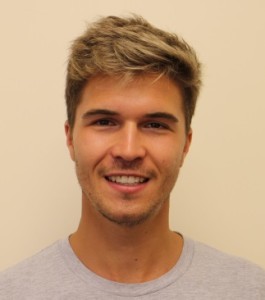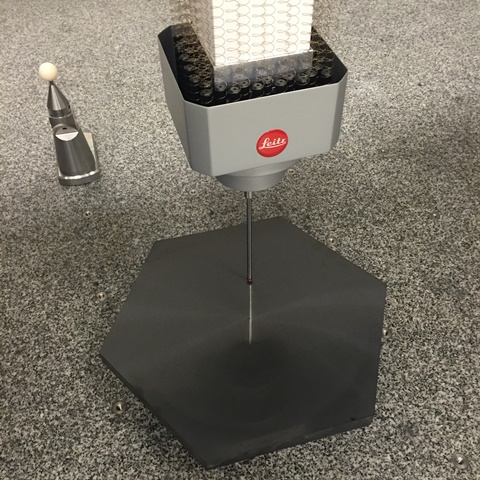Precision metrology for large freeform non-specular surfaces – Mr James Norman
Currently, there is not a standard method for measuring a metre–scale non-specular freeform surface in the ‘ultra-precise’ measurement regime; specifically, surface features in spatial frequency bandwidths lower than surface roughness. It is critical for manufacturing metrology to determine why this is, and produce measurement systems with the required specifications for ultra-precise measurement of these surfaces.
Of the state-of-the-art metre–scale non-specular surface measurement systems, there is not one method that fulfils the requirements of: high measurement accuracy and resolution, high measurement density, high speed, large measurement volume, and low cost. A system design with these characteristics is essential for the low uncertainty measurement, and subsequently, the production of precise components; such as metre–scale optics for the next generation of extremely large telescopes; as well as similarly sized optics for large laser systems.
An important example of metre–scale non-specular surfaces, with complex topologies, that require measurement with low measurement uncertainty are optics for large science projects: such as ground–based and space telescopes for astronomy; as well as high power laser systems for fundamental physics research. At several stages during manufacture these optics require such measurement: despite the non-specular nature of the measurand surfaces.
The current expectation for ultra-precise measurement of surfaces, post-grinding, involves a non-corrective polishing treatment designed to render the optical surface specular and measurable with an optical interferometer at a visible wavelength. As is clearly shown in figure 1.4, this neutral polishing step has no affect upon the surface error in anything other than high spatial frequency bandwidths. Whilst this process enables the use of a highly accurate measurement method, given that the process has no direct effect on the figure error, it could be considered as inefficient; the process of neutral polishing and interferometry is expensive in materials, machining time, and measuring time.
This PhD project will endeavour to determine and implement a method for the measurement metre–scale non-specular freeform surfaces, with uncertainty significantly lower than the current state-of-the- art measurement systems, capable of measuring such surfaces.
This research is being undertaken at Cranfield University under the supervision Dr Xavier Tonnellier.
Outputs
Conference Publications
Norman, J., Tonnellier, X. and Morantz, P., (2016). A method for assessing measurement precision and stability of optical probes, Poster abstract: Proceedings of the 16th International Conference of the European Society for Precision Engineering and Nanotechnology, 30 May-3 June 2016, University of Nottingham, Nottingham, UK, 181-182.
Conference Presentations
Norman, J., Tonnellier, X. and Morantz, P. (2016). A method for assessing measurement precision and stability of optical probes, Poster presentation at the 16th International Conference of the European Society for Precision Engineering and Nanotechnology, 30 May – 3 June 2016, University of Nottingham, Nottingham, UK, P1.68.
Posters
Norman, J., Tonnellier, X. and Morantz, P. (2016). Precision metrology for large freeform non-specular surfaces, Poster presentation to the EPSRC Centre for Innovative Manufacturing in Ultra Precision Steering Meeting Committee, 24 February 2016, Cranfield University, UK.
Digital Media
Norman, J. (2015). Precision metrology for large freeform non-specular surfaces, PhD project video produced for an informal Centre competition in 2015.



